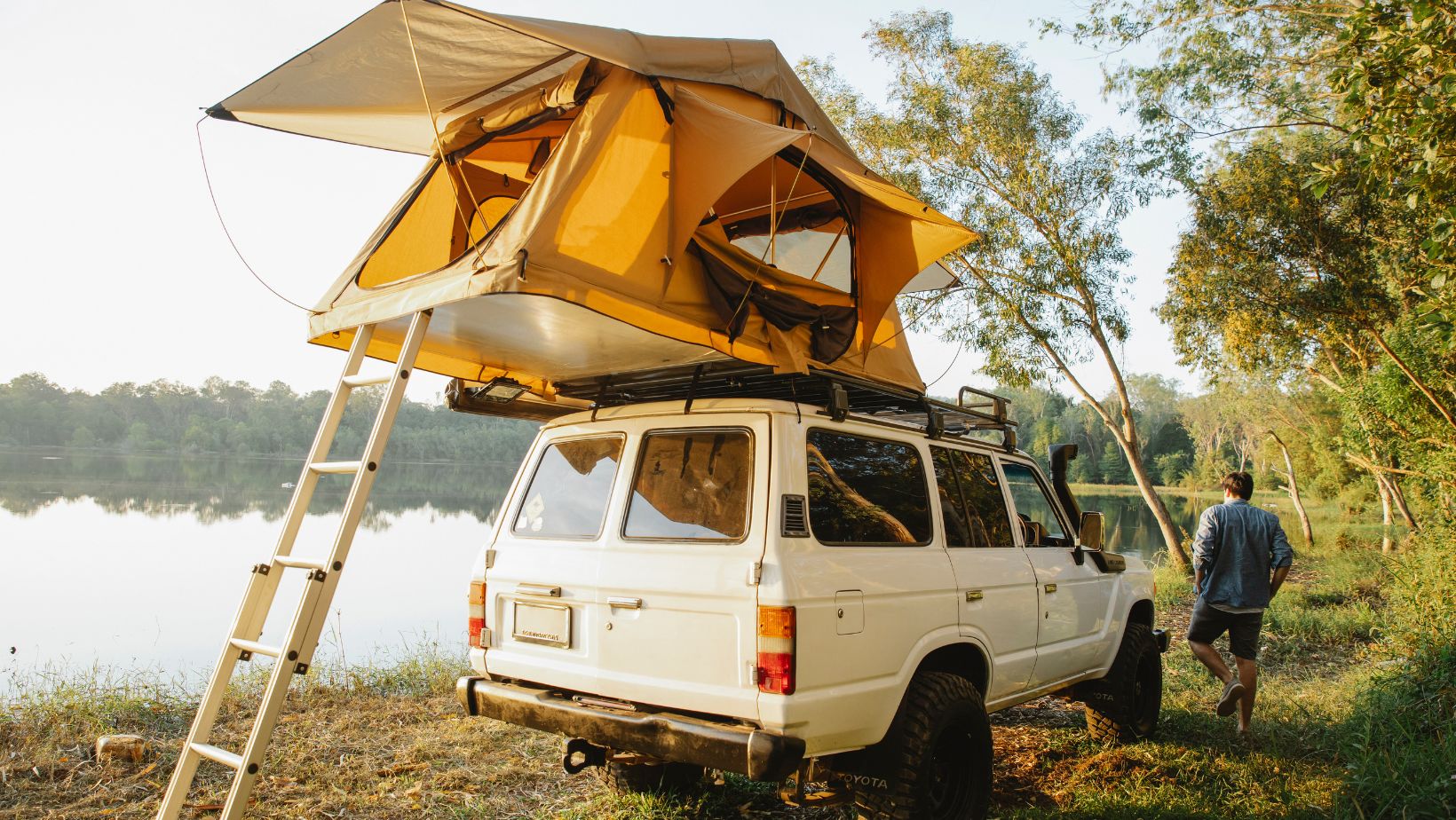Camping with an SUV offers comfort and convenience, especially when using a tent that attaches directly to the vehicle. To set up a tent connected to an SUV, park on level ground, secure the attachment to the rear or side of the vehicle, and assemble the tent structure for a stable and weather-protected space. This setup gives quick access to the car while adding extra room for sleeping or storage.
An SUV tent connected to vehicle setups works well for families, groups, or anyone who wants more space than a standard tent. Models such as a waterproof SUV tent provide shelter for several people and keep the interior dry during rain. With the right tent, campers can stay organized, rest comfortably, and enjoy the outdoors without sacrificing easy access to their gear.
By learning the basic steps of setup and adding small touches for comfort, anyone can turn their SUV into a practical basecamp. This approach makes camping more efficient and removes the hassle of carrying everything into a separate ground tent.
Key Takeaways
- Setting up an SUV tent is simple with the right steps
- A connected tent expands space and comfort while camping
- Choosing the right model makes the experience more practical
Essential Steps to Set Up a Tent Connected to Your SUV
A tent that connects to an SUV can create extra sleeping space, weather protection, and quick access to gear. The process involves choosing the right style of tent, preparing the site, attaching it properly to the vehicle, and finishing the setup with poles and a rainfly.
Choosing the Right SUV Tent or Tailgate Tent
The first step is selecting a tent designed to connect directly to a vehicle. Common choices include SUV tents that attach to the rear hatch, tailgate tents that fit over the back door, and rooftop tents that mount above the car. Each type has its own strengths depending on space needs and setup style.
An SUV tent offers a ground-level sleeping area with a tunnel or sleeve that seals to the vehicle. This keeps bugs out and allows easy access to gear inside. Tailgate tents are lighter and quicker to install, making them good for short trips or day use.
Size matters when choosing. Families may need a larger ground tent, while solo campers may prefer a smaller tailgate model. Ventilation, waterproofing, and ease of setup should also guide the choice. A tent with mesh windows and a fitted rainfly will provide airflow while keeping rain away.
Preparing Your SUV and Campsite
Before attaching a tent, the SUV should be parked on a flat surface. A level spot makes sleeping more comfortable and prevents water from pooling under the tent if it rains. Clearing away sticks, rocks, or uneven ground will also help protect the tent floor.
The vehicle itself should be clean around the hatch or door where the tent will connect. Dirt or sharp edges can damage the tent fabric. If the SUV has a roof rack or hitch, check that these parts will not interfere with the setup.
It helps to plan the direction of the vehicle as well. Parking so the hatch faces away from strong winds or toward shade can improve comfort. Having the rear of the SUV close to a fire pit or picnic table can also make camp life easier.
Attaching and Securing the Tent
Most SUV tents and tailgate tents use straps, hooks, or sleeves to connect to the vehicle. The tent should be laid out on the ground first, with the opening lined up to the rear hatch. Straps are then tightened around the roof rack, wheel wells, or door frame.
A snug fit prevents gaps where insects or rain could enter. Some tents include elastic sleeves that stretch over the hatch, while others use magnets or clips. It’s important to avoid over-tightening, which could strain the fabric or scratch the SUV.
Once the tent is attached, check for a seal around the vehicle. Adjust straps or reposition the tent if needed. A good connection makes the tent feel like an extension of the SUV rather than a separate shelter.
Setting Up the Tent Structure and Rainfly
After the tent is secured to the SUV, the next step is to build the frame. Poles should be inserted into the sleeves or clips according to the tent’s design. This creates the shape and gives the shelter stability.
 Stakes and guylines can then be used to anchor the tent to the ground. This prevents shifting in wind and keeps the walls tight. If the campsite surface is rocky or hard, weighted bags or heavy objects can work in place of stakes.
Stakes and guylines can then be used to anchor the tent to the ground. This prevents shifting in wind and keeps the walls tight. If the campsite surface is rocky or hard, weighted bags or heavy objects can work in place of stakes.
Finally, attach the rainfly if the tent includes one. The rainfly covers the roof and directs water away from seams and zippers. Leaving a small gap between the tent body and the rainfly helps with airflow. This reduces condensation inside while still keeping the interior dry.
Maximizing Comfort and Functionality in Your SUV Tent Setup
Comfort in an SUV tent comes down to airflow, usable space, and protection from weather. Small adjustments like opening mesh panels, setting up an awning, or securing a rainfly can make the difference between a restless night and a relaxing stay.
Ventilation and Mesh Windows
Good airflow prevents condensation and keeps the interior cooler in warm weather. Mesh windows allow air to circulate while still blocking insects, which is especially useful in wooded or humid areas.
He or she should open multiple mesh panels on opposite sides of the tent to create cross-ventilation. This simple setup reduces stuffiness and helps regulate temperature inside.
Many SUV tents include zippered covers for mesh windows. Keeping them partly open at night balances privacy with airflow. In cooler weather, closing most panels while leaving one or two slightly open helps reduce moisture buildup without losing too much warmth.
For added comfort, campers can place a small battery-powered fan near a mesh window. This directs fresh air inside and makes sleeping more comfortable.
Using Awnings for Shade and Extra Space
An awning attached to the SUV tent provides shade during the day and a dry entry point in rain. It also creates a covered area for cooking, sitting, or storing gear outside the sleeping space.
Simple awning setups use poles, straps, or magnetic attachments that connect to the tailgate or side of the vehicle. Once in place, the awning expands usable space without adding another full tent.
Campers often use this area for chairs, a table, or a cooler. This keeps the sleeping area less cluttered and more comfortable. Adding a ground tarp under the awning also makes it easier to keep dirt and mud out of the main tent.
When camping in hot weather, an awning positioned to block direct sunlight can lower the temperature inside the tent. This makes resting inside more pleasant during the afternoon.
Tips for Weather Protection and Stability
Rain and wind can quickly affect comfort if the tent is not prepared. Using a rainfly over the SUV tent helps keep water out while still allowing airflow through mesh windows.
Stability comes from securing every strap, stake, and guyline. He or she should check that the tent is firmly attached to the SUV, especially around the tailgate connection. Loose straps can let in drafts or water.
Placing the tent on level ground helps with drainage during rain. If possible, campers should avoid low spots where water might collect.
For stronger winds, adding extra stakes or weighted bags near the corners improves stability. A properly tensioned rainfly also prevents flapping noises at night, making sleep easier.
By preparing for weather changes with a rainfly, secure fastenings, and careful site choice, the tent setup remains comfortable and functional in different conditions.
Conclusion
Connecting a tent to an SUV gives campers a practical way to combine shelter with vehicle access. It allows them to keep gear close, sleep comfortably, and still have the freedom to drive away when needed.
The setup works well for short trips and longer stays because it balances convenience with outdoor living. Campers can enjoy the space of a tent while benefiting from the storage and security of their vehicle.
By choosing a tent that fits the vehicle, setting it up correctly, and preparing basic gear, anyone can create a simple and comfortable base for camping. This approach makes outdoor trips easier and more enjoyable without giving up useful comforts.

